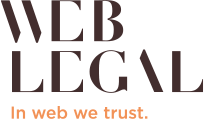Clothing company doesn’t do proper research before filing cybersquatting dispute.

A clothing company that sells under the brand Goodlife has been found (pdf) to have engaged in reverse domain name hijacking.
GL Concepts, LLC d/b/a Goodlife filed a dispute with World Intellectual Property Organization against the domain goodlife.com. The clothing company uses the domain GoodlifeClothing.com.
Goodlife.com was registered in 1998, and the Complainant didn’t register a trademark until 2015. It claimed a first use in commerce in 1999.
The Complainant argued that the domain owner registered it in bad faith and was “holding the unused disputed domain name hostage for an exorbitant price tag” but didn’t provide any evidence that the domain owner was trying to sell the domain.
Goodlife and its law firm, Ritholz Levy Fields LLP, failed some basic checks that would have conceivably helped it in the case. The Whois history for the domain shows that the current owner was not the original owner in 1998. Furthermore, the current owner ran a clothing site on the domain for some years.
The complaint might have still failed with this information (Good Life is, after all, a common phrase), but it might have avoided the reverse domain name hijacking (RDNH) finding.
Panelist Assen Alexiev pointed this out in his RDNH finding:
The Complainant is represented by counsel. It should have taken into account that the Respondent has been the owner of the disputed domain name for a long period of time, which started seventeen years before the registration of the Complainant’s GOODLIFE trademark and nearly a year before its claimed first use in commerce, and should have appreciated the established Policy precedent that where a respondent registers a domain name before the complainant’s trademark rights accrue, panels will not normally find bad faith on the part of the respondent. It would be incumbent on the Complainant to advance any facts supporting a claim to a later acquisition of the disputed domain name by the Respondent, if such fact exists. The Complainant should have also appreciated the lack of any evidence of targeting of the Complainant by the Respondent through the use of the disputed domain name. In view of the above, the Complainant should have appreciated that it would not be able to prevail on the issue of bad faith under the Policy.
On the basis of the above, the Panel finds that the Complainant has engaged in Reverse Domain Name Hijacking.
Given the facts that the Complainant apparently believed to be true, this was a clear case of reverse domain name hijacking. But with standard research that any law firm filing a case should undertake, it might have been able to avoid the RDNH filing.
Post link: Badlife: company tries to reverse hijack GoodLife.com
© DomainNameWire.com 2022. This is copyrighted content. Domain Name Wire full-text RSS feeds are made available for personal use only, and may not be published on any site without permission. If you see this message on a website, contact editor (at) domainnamewire.com. Latest domain news at DNW.com: Domain Name Wire.
Go to SourceAuthor: Andrew Allemann




